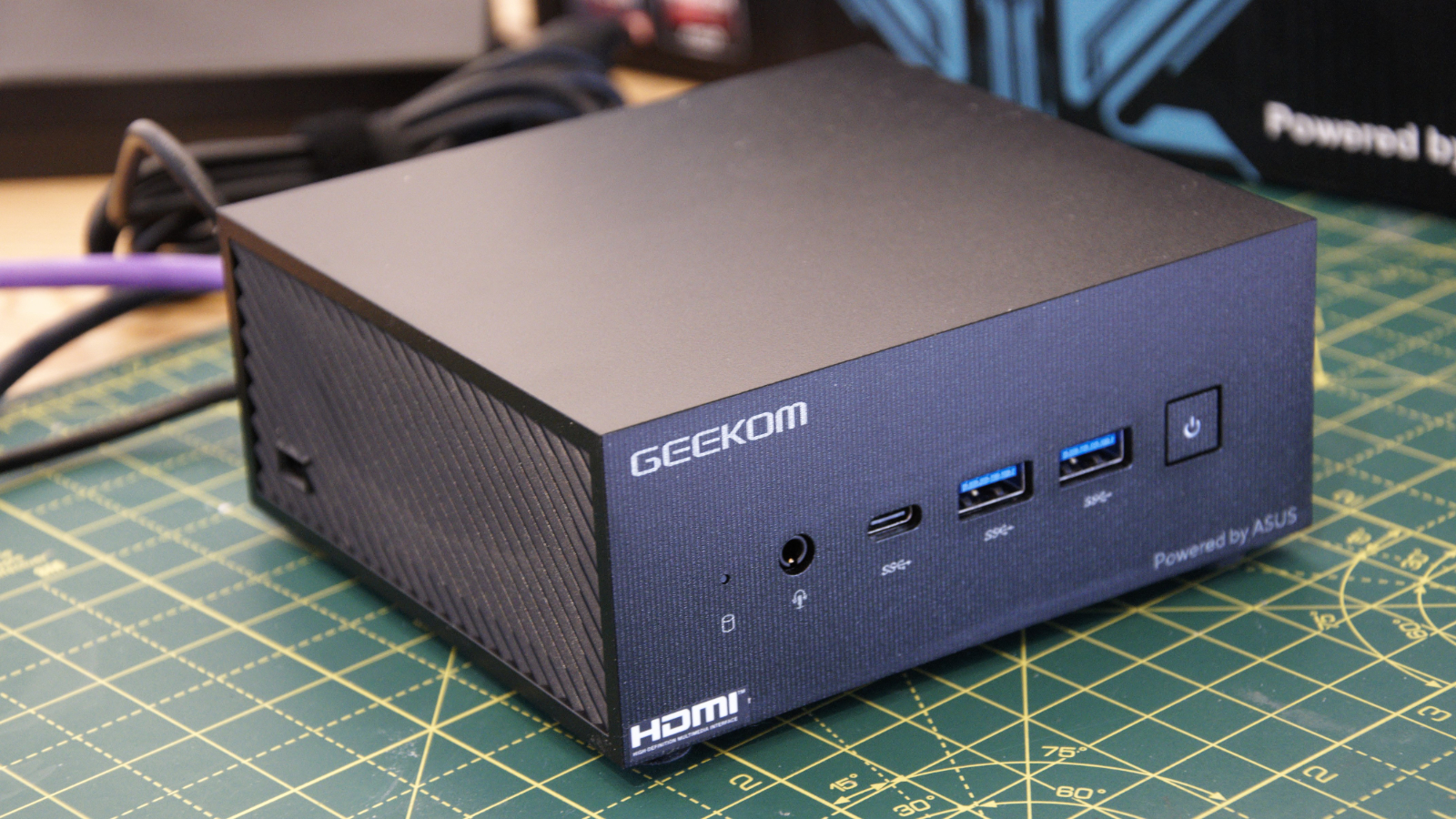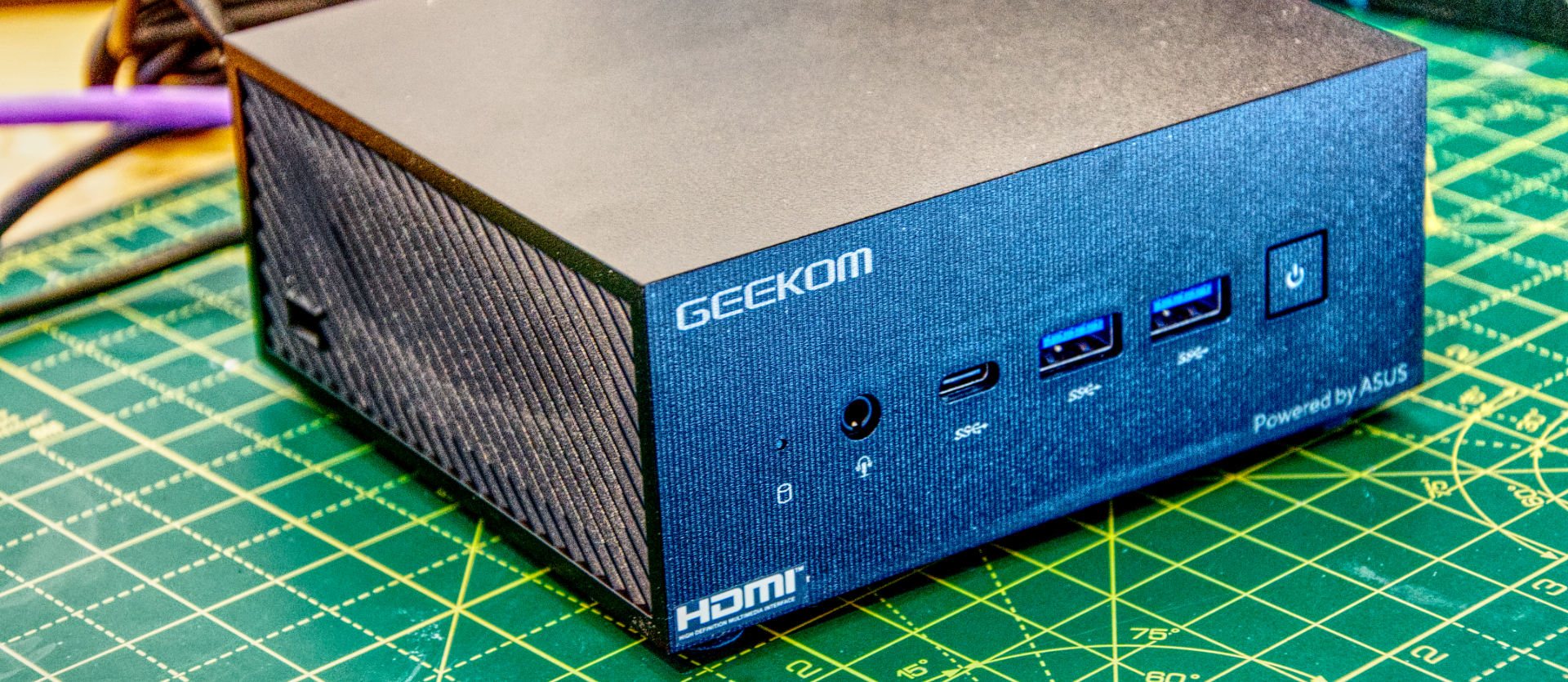
Geekom AS 5: 30-second review
Here is the Geekom AS 5 configuration sent to TechRadar for review:
CPU: AMD Ryzen 9 5900HX (8 cores, 16 threads)
Graphics: Radeon RX Vega 8
RAM: 32GB DDR4-3200MHz RAM (Expandable to 64GB)
Storage: 1TB GB PCIe Gen 3 NVMe SSD, free Gen 3 slot, free SATA 2.5 bay
Rear Ports: 1x USB 3.2 Gen2, 2x USB 3.2 Gen1. 1x USB 3.2 Gen2 Type-C (Support DP1.4, 7680 x 4320 @60Hz), 2x HDMI 2.1 Port (4096 x 2160 @60Hz), 1x Display Port 1.4 (7680 x 4320 @60Hz), 1x 2.5G RJ45 LAN, 1x Pad-lock, 1x DC-in
Front Ports: 1x USB 3.2 Gen1 Type-C (Data only), 2x USB 3.2 Gen1, 1x Audio Jack (Line out/ Mic in/ Headphone out)
Connectivity: Intel Wi-Fi 6E + Bluetooth v5.2
Audio: 1x DMIC, no speakers
Camera: None
Size: 120 x 130 x 58 mm (W x D x H)
OS installed: Licensed Windows 11 Pro
Accessories: Adapter 20V/6A 120W
Geekom has built a good reputation in the Mini PC market, with both its Mini iT11 and MiniAir 11 recent designs receiving positive reviews.
Those machines are based on Intel mobile silicon, but the AS5 and its AS6 big brother use the older AMD technology to differentiate from what the majority of Mini PC makers are doing.
The AS 5 uses the AMD Ryzen 9 5900HX processor, a mobile chip that first appeared in January 2021 at its heart, offering an eight-core and sixteen-thread capability with AMD RX Vega 8 graphics baked in.
That’s a Zen 3 architecture chip with a 3.3GHz base clock that can boost to 4.6GHz when needed within the configurable power limitations of 45W.
With such recent silicon, the AS 5 has an excellent selection of external ports, but critically even in a very small NUC-sized enclosure, it has room for two 2280 M.2 NVMe drives and a SATA SSD or HDD.
It also comes with WiFi 6E, Bluetooth 5.2 and a 2.5GbE LAN, two HDMI ports and a single DisplayPort output. That would make it perfect for a rolling presentation or office work with multiple monitors.
As Mini PC designs go, this one is priced well above entry-level devices, slightly below the level of higher-end Intel-based NUC options, like the Minisforum NPB7.
With Intel now exiting this space as a NUC maker, the Geekom AS 5 might well be the specification of machine that many choose to turn.
Geekom AS 5: Price and availability
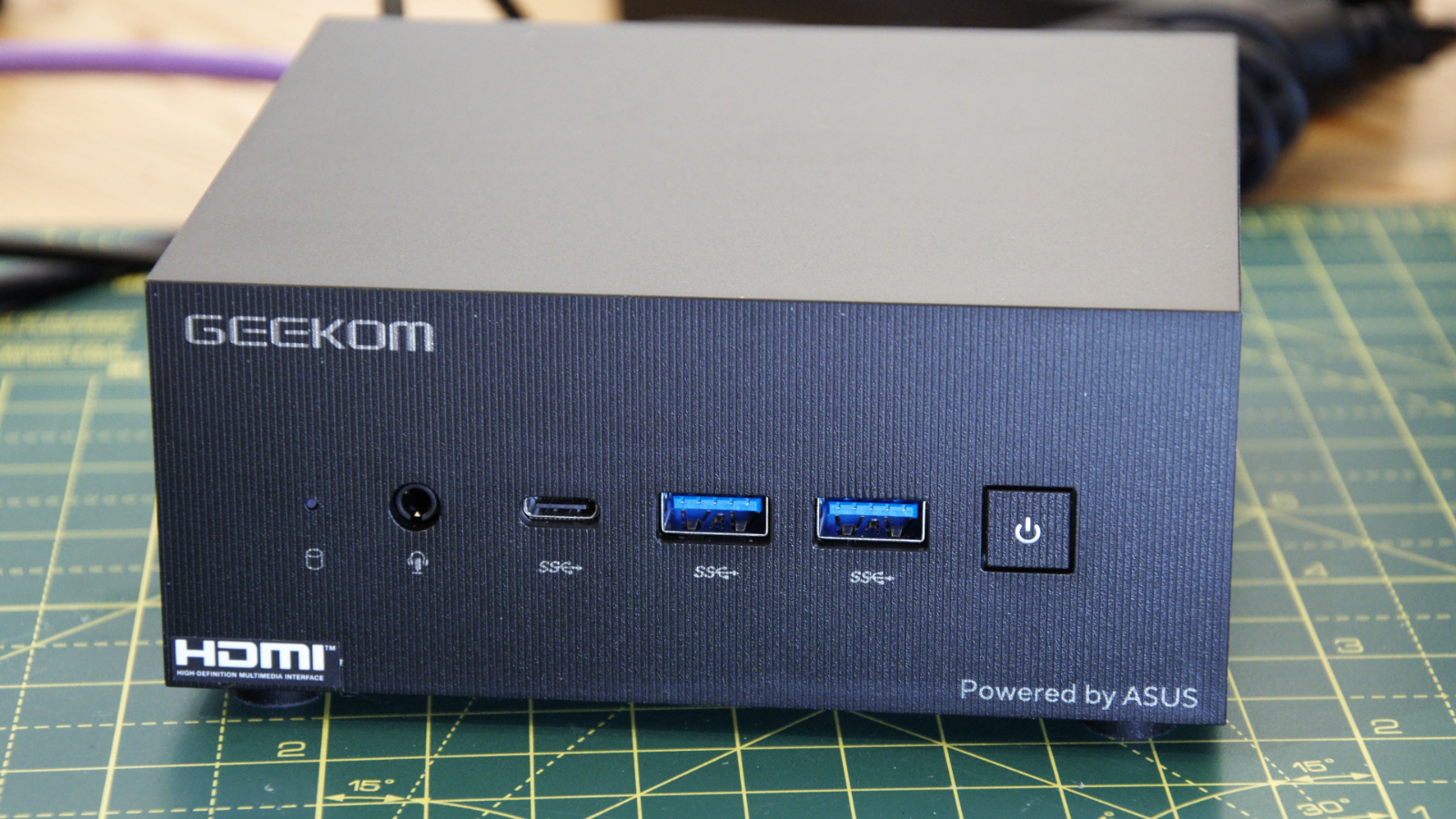
- How much does it cost? $609/£549/€599
- When is it out? It is starting to be available now
- Where can you get it? Direct from Geekom
Often Mini PC makers offer a series of SKUs, with some even making the machine without RAM or storage available as ‘barebones’, but not the AS 5.
There is a single SKU of this machine that comes with 1TB of storage and 32GB of RAM on offer. At the time of writing, the product is out of stock from the maker's UK website but available on the USA and EU sites.
Shipping is from local warehouses in each region, so purchasers should expect their hardware in 2-5 business days.
That offering is almost exactly the same cost as the Minisforum NPB7, but that machine only comes with 16GB of RAM and 512GB of storage for $609.
While a barebones option would have been nice, the asking price for a machine of this specification is competitive and highlight how much more power and capability paying extra can net you.
Compared with more expensive options, like the now-defunct Intel 13 Pro, the AS 5 looks like a snip for this power and capability.
- Value: 4 / 5
Geekom AS 5: Design
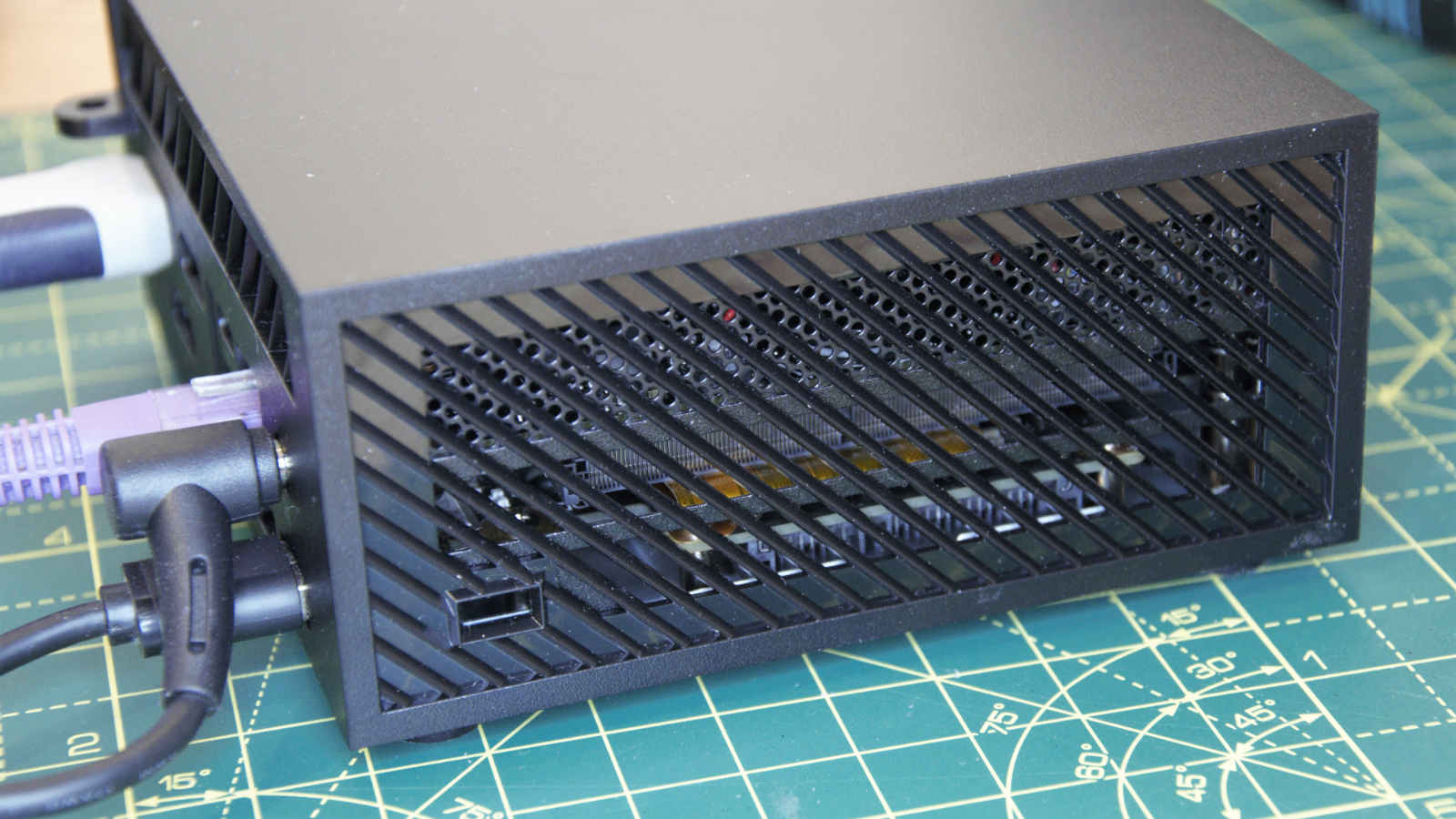
- Powered by Asus?
- Excessively plastic
- Dual board design
One thing that immediately sparked our curiosity was that Geekom printed on the case of the AS 5 (and AS 6) ‘Powered By Asus’. Nowhere on the Geekom website does it explain how this machine is powered by one of its competitors, so we went on to the Geekcom forum and asked for an explanation.
The relevant part of the reply said, “ASUS, as a well-known computer brand, not only provides high-quality motherboards and graphics cards, but also designs special cases and cooling systems for mini PCs, as well as pre-installs Windows 11 operating system and some useful software.
Therefore, although this mini PC uses AMD's CPU and Delta's PSU, its overall performance and user experience are guaranteed by ASUS, so it is supplied by ASUS.”
Desperately trying to navigate that opaque answer, it appears that Asus might be responsible for the motherboard, case or cooling system. How any of those parts translates into ‘Powered by’ is beyond us, but Asus allowed this branding to be put on these machines for some reason.
We hope it’s the motherboard in the AS 5 because the case and cooling of this system aren’t things we’d be especially proud.
For example, the case is completely made of plastic, and when compared to that we’ve seen on machines like the metal-shelled NPB7, it looks like it wouldn’t handle much abuse.
In particular, the sides have wide angled slots to allow maximum airflow from the outside, but this spacing makes for some thin unsupported plastic bars.
However, the assembled machine doesn’t feel flimsy, mostly because the core of this machine is a compact structure that contains some metal and tightly packed components.
Access to the inside is via four screws inside the four rubber feet on the underside of the PC, though getting this panel to release is complicated by a cutout that includes the video-out part of the I/O shield area.
After much wiggling and some spudger encouragement, the base can be detached to reveal a slightly worrying layout. The AS 5 uses a dual board design where various functions have been disseminated onto a second board that is connected by a wide flexible ribbon cable.
To our experienced eyes, this looks like a recipe for a user-created disaster. These cables break, become detached and often have very weak receptacles.
Our advice would be that you go in there once, add or change what you must, and then put the lid back on and never go inside again. But it’s your choice.
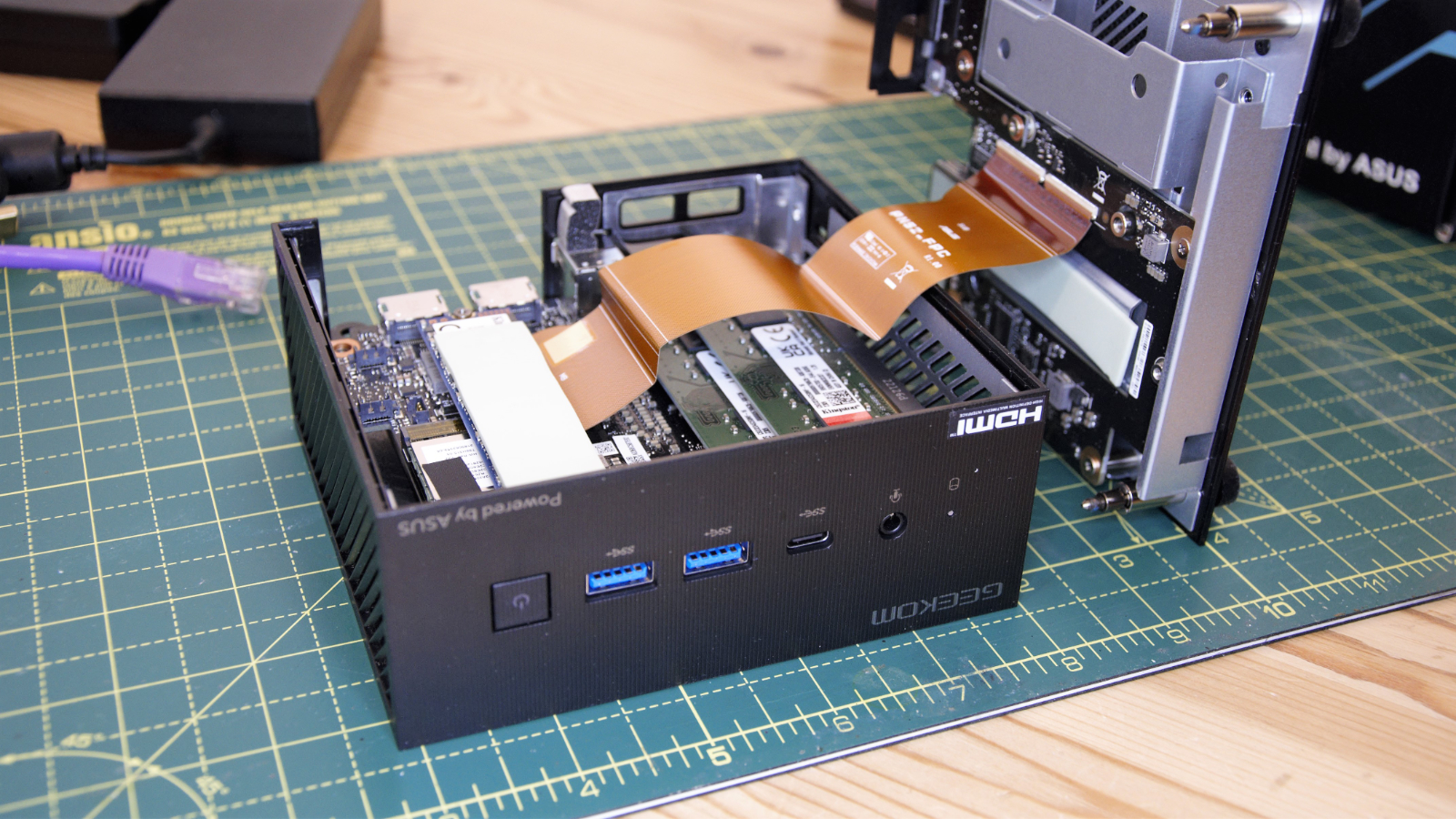
The flexible cable is bad news, but the good tidings here are that inside are features that all NUC owners want. These include an unused 2280 M.2 PCIe Gen 3 slot, a bay for any 2.5-inch SATA drive, and both branded RAM and storage.
The DDR4 RAM and NVMe drive were both Kingston products and not some cheap OEM unknown brand, thankfully.
Being able to drop a second NVMe drive for cloning or expansion is remarkably helpful, and relatively easy access to the RAM provides a simple way to increase the amount installed.
The only caveat to the addition of NVMe drives is that there isn’t room for large heatsinks on any installed drives, and there are heat pads that are in place to manage how hot any drive might get.
Therefore we’d avoid those desktop drives that run hot and look at more laptop-friendly designs where power consumption was more important than raw speed.
In short, the design of the AS 5 is great in terms of the upgrade options but less wonderful because of its plastic construction and inherently fragile flexible connectors.
- Design: 3 / 5
Geekom AS 5: Features
- Ryzen 9 powered
- Impressive port selection
- Noisy fan
We’ve tested several AMD Ryzen mobile processors in laptops and Mini systems, and they’re potent devices that generally exceed our expectations.
Having seen what Beelink did with its SER6 Pro 7735HS using the Ryzen 7735HS, we were curious about what a move up to the Ryzen 9 5900HX might deliver in the AS 5.
These are both eight-core and sixteen-thread processors, but the Ryzen 9 is an older design that appeared in early 2021, and it only supports PCIe Express 3.0, not 4.0.
The advantages of the Ryzen 9 are that it has an unlocked multiplier and it can handle up to 105C running temperature, over the 95C limit of the 2023 era 7735HS.
But conversely, it can’t use DDR5, which the 7735HS can, and this impacts not only on overall bandwidth but specifically the performance of the integrated graphics.
Therefore the predictable perspective that Ryzen 9 should be better than Ryzen 7 is misplaced, although the 5900HX is a good processor, and by Mini PC standards, it is a powerful platform.
What this machine does offer is an excellent port selection, especially for those that like to utilise multiple monitors.
As appears to be a common approach on Mini PC makers, the sides are largely declared exclusively for ventilation use, with all I/O focused on the front and back of the AS 5.
Alongside the illuminating power button are three USB ports, with two USB-A and one USB-C, and the only other front port is a 3.5 audio combo.
The rear has three more USB 3.2 Type-A ports and another Type-C. Of all these USB ports, only two are 10Gbit, one each of USB-A and USB-C, and both are on the back. All the rest are 5Gbit. More 10Gbit ports would have been nice, but a total of seven USB ports is still impressive for a machine this small.
It also sports many video outputs, with dual HDMI 2.1 and a single DisplayPort on the back.
Technically, the 10Gbit USB-C port can also support a monitor, as the Radeon RX Vega 8 will support up to four displays. But, our advice wouldn’t be to exceed two monitors with 1440p or higher resolution. As the Radeon RX Vega 8 isn’t the fastest integrated solution AMD has ever made.
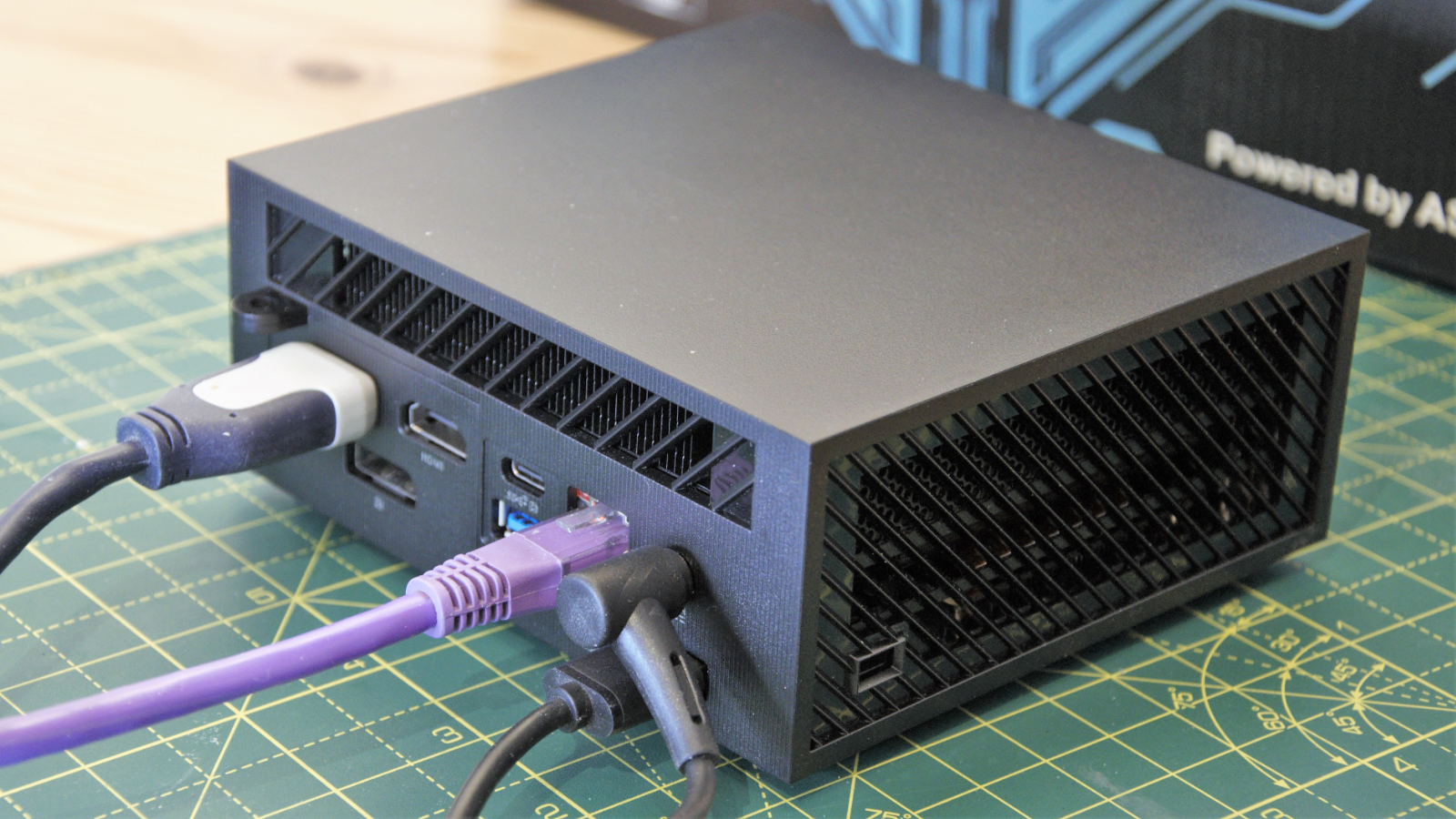
For those using this system in anger, the 2.5GbE LAN port is a must, irrespective of the quality of WiFi in the office. It’s a fire-and-forget solution that, if the connected switch supports 2.5GbE, can easily shift 250Mb/s a second to and from network servers.
Included in the box with the AS 5, Geekom provides an HDMI cable, a 120W external PSU, a VESA mounting plate and a selection of screws for attaching that to the AS 5 and a monitor.
But the final feature we’d like to discuss is the cooling, something buried deep inside the AS 5 that draws air from the sides and then ejects it through a vent that runs across the back above the I/O area.
Even when the machine isn’t under duress, this makes a clearly audible noise, one that might ultimately annoy the owner. When we investigated the BIOS settings, we discovered that the AS 5 and AS 6 both had a fan speed set to ‘Standard’ by default. It is possible to use ‘silent’ mode instead and reduce the hum, though this obviously might not cool the machine as effectively, resulting in CPU and GPU throttling.
- Features: 4 / 5
Geekom AS 5: Performance
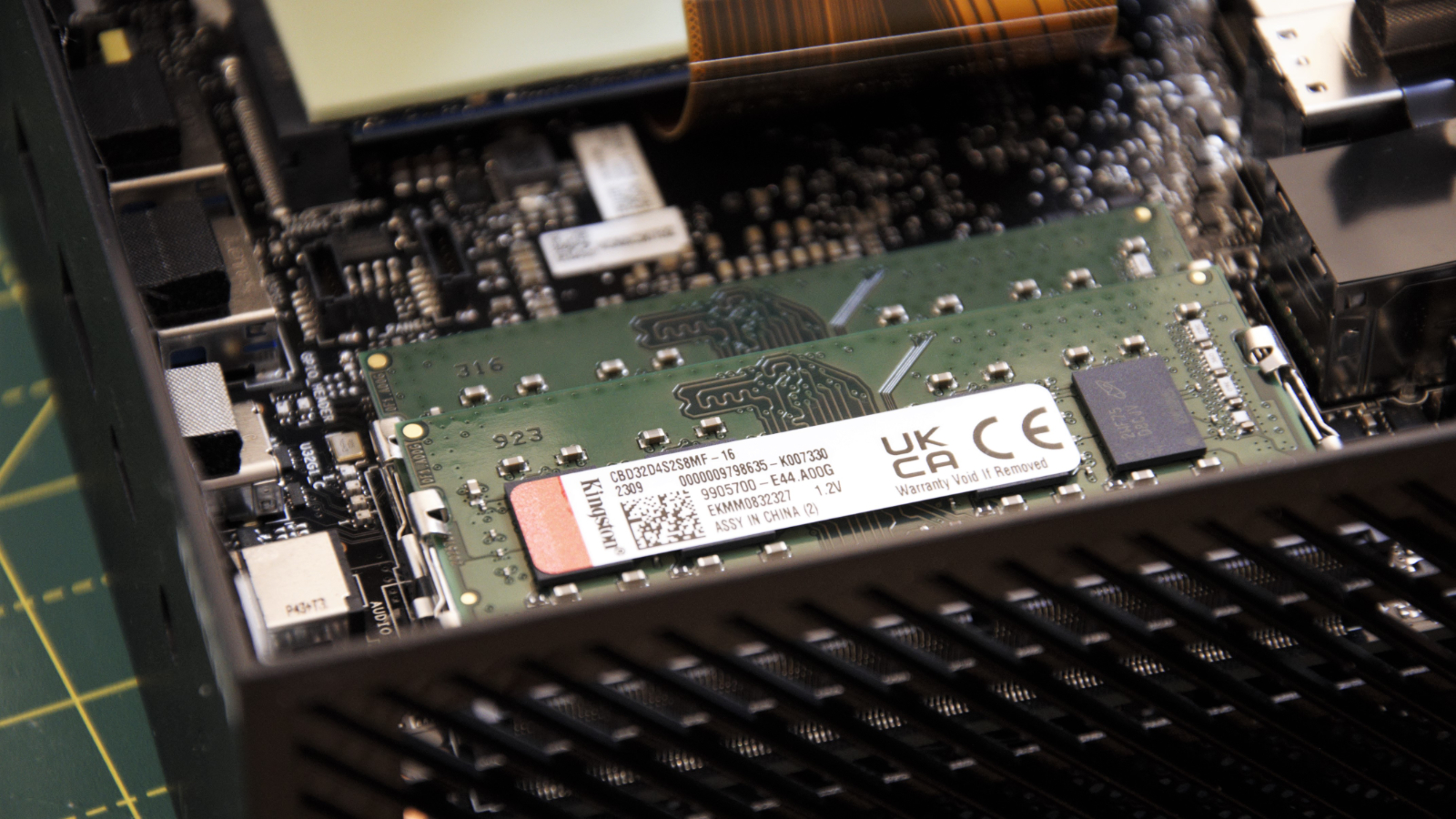
- Fast processor
- Bandwidth is an issue
- PCIe 3.0
Here's how the Geekom AS 5 scored in our suite of benchmark tests:
3DMark Wild Life: 8662; Fire Strike: 4041; Time Spy: 1625;
Cinebench R23 CPU pts: 1459 (single-core); 11362 (multi-core)
GeekBench 5: 1559 (single-core); 8559 (multi-core), 17047 (OpenCL)
CrystalDiskMark: Sequential Read: 3018 MB/s; Sequential Write: 2616 MB/s
PCMark 10 (Office Test): 6574
Windows Experience Index: 8.1
The performance of this machine was something of a disappointment, given that it has a Ryzen 9 processor with eight cores.
But, to paraphrase that familiar relationship-ending phrase, it's us, not the AS 5. Because we’ve been spoiled by the Ryzen 7735HS, Ryzen 7 6800H and Core i7-13700H into expecting more than the Ryzen 9 5900HX can deliver.
Ironically, the issue here isn’t the CPU primarily. Because the Zen 3 architecture, with eight cores and 16MB of L3 and 4MB of L2 cache, can run very sweetly and drive up to sixteen threads effectively.
There are two problems for the AS 5, the first of which is power consumption and the heat that consuming that power generates.
The 5900HX has an AMD Configurable TDP (cTDP) that enables it to operate in a range from 35 to 54W. In this NUC context, it appears Geekom went with the 45W part of that spectrum to avoid overheating the 5900HX in such a small enclosure.
That creates a glass performance ceiling that the CPU and GPU can’t exceed, even if the silicon is capable of being run with more power.
However, what is probably an even greater issue is the second issue, memory bandwidth. The 5900HX can only use DDR4 memory, and the AS 5 has the fastest DDR4 SODIMM modules available at 3200MHz.
In theory, it can also address LPDDR4 up to 4266MHz, but we’re not sure those would work in the AS 5, and it could be an expensive exercise to find out that they didn’t.
All the other CPUs we just mentioned use DDR5, which not only provides more bandwidth (much more in dual channel mode), but also plays a significant part in GPU performance.
As it uses the DDR4 in the AS 5 for display memory, the bandwidth limits of the RAM impact the performance of the Radeon integrated graphics.
For raw processing power, the single thread performance of the 5900HX is close to an Intel Core i5-11320H, and multi-core is up there with the AMD Ryzen 7735HS and much better than the Intel Core i5-1235U.
But where it gets exposed is in the graphical tests where the Vega 8 GPU doesn’t have the bandwidth to compete with DDR5 memory and the better AMD or Intel processors.
The 3DMark Firestrike score of just 4041 is the same as the Iris Xe (96EU) gets with the Core i5-11320H, and that’s only a four-core CPU.
With the Beelink SER6 Pro 7735HS, we saw a Wild Life score of 15435, and this machine nearly halves that to just 8662. That reduction is a combination of the better GPU in the 7735HS and the greater bandwidth available to it.
The obvious conclusion is that this machine isn’t ideal for graphical problems, though perversely, PCMark loved this design, and it achieved a very high score of 6574.
Another performance limitation that we need to point out is that the speed of the NVMe drive isn’t fantastic, but it is only PCIe 3.0. With newer silicon using PCIe 4.0 and able to handle NVMe to that specification, the speed offered by the Kingston SNV2S/1000G in this system is as fast as it is designed to run within the constraints of PCIe 3.0 bandwidth.
Therefore, if you intend to replace that or put another NVMe module alongside it, there is little point in buying a drive with a PCIe 4.0 capability.
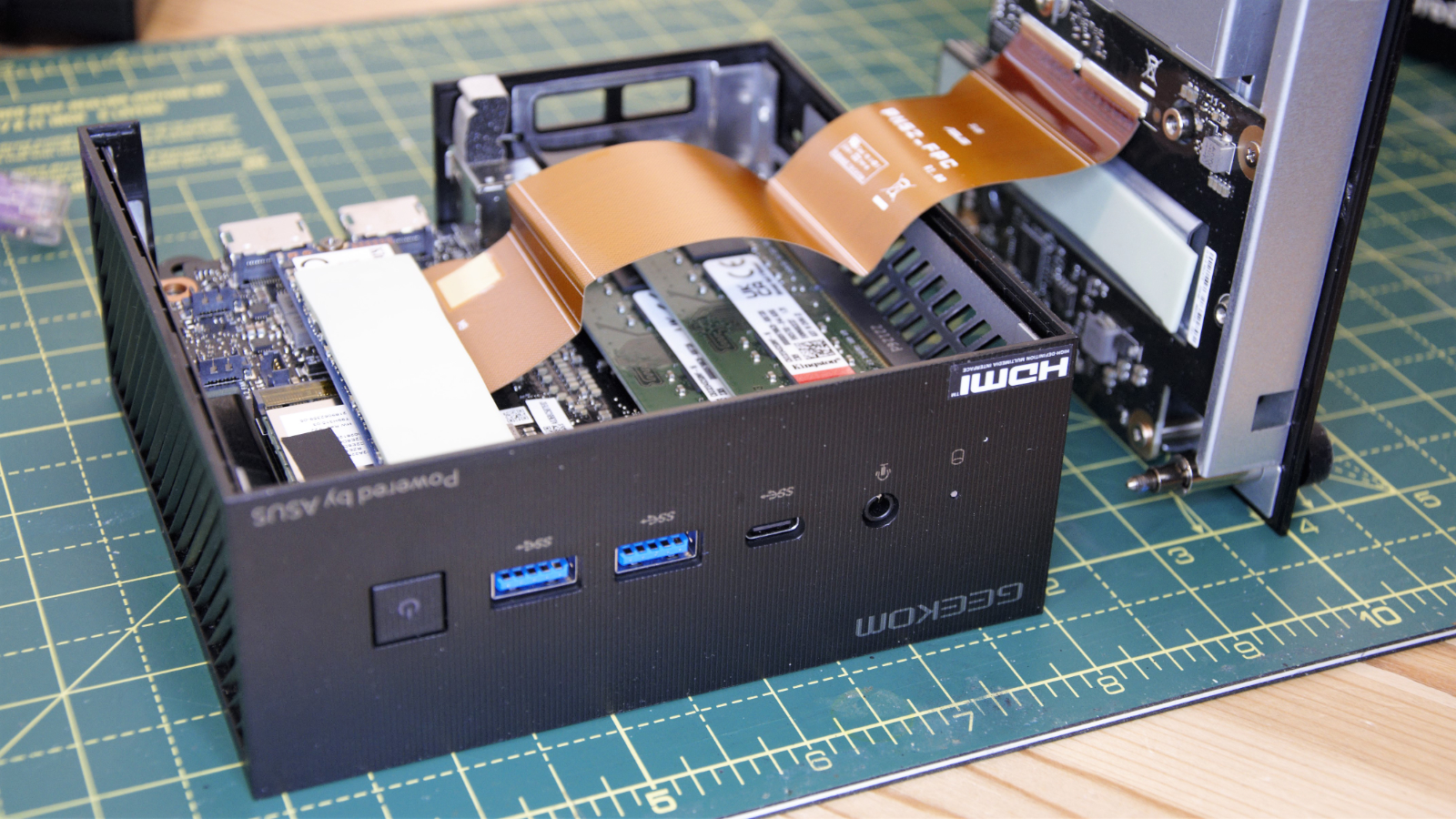
- Performance: 3 / 5
Our excitement for this product was rapidly tempered by the reality of how long it has been since AMD launched the Ryzen 9 5800HX and all the enhancements and developments that have happened since.
The AS 5 is still a powerful small system but is outclassed by newer AMD and Intel 13th Gen silicon and how it uses DDR5 to enhance its graphics and processing options.
The excellent port selection, dual M.2 slots and a host of other nice features still make the AS 5 a desirable system, but it doesn’t offer the raw performance of machines that use the Ryzen 7735HS or Core i7-13700H. It is cheaper than most of those, so if the intended use doesn’t require the very fastest NUC available, then this might still be a good choice.
Geekom AS 5: Report card
Should you buy a Geekom AS 5?
